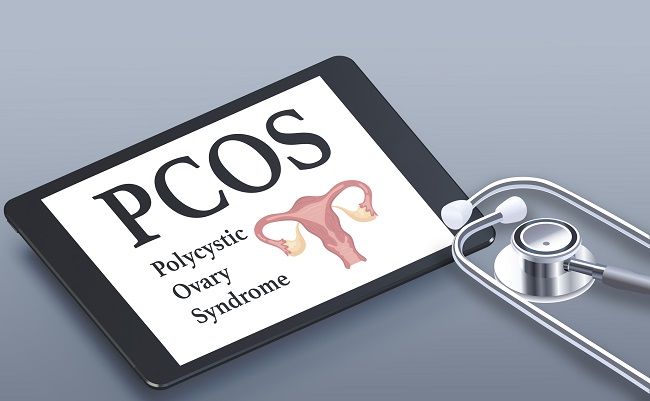Andy Peloquin
New Member
Hormone replacement therapy is a viable option for men and women alike. HRT is used to increase testosterone levels of men with Low T, but it can also increase estrogen levels in women. It is a treatment often used for women suffering from the symptoms of menopause.
Menopause is a normal part of a woman's life, but it's not often pleasant. The hormonal changes may be gradual (over the course of years), but the symptoms of menopause (hot flashes and mood swings, to name just a few) can be hard to cope with. HRT is used to replace the hormones the female body is no longer producing after menopause. By replacing those hormones, it helps to alleviate the symptoms of menopause and make the transition easier.

However, not everything you hear about HRT for menopause is totally true. Many women are told they need estrogen to counteract the side effects of menopause, due to the fact that their bodies are no longer producing estrogen--the primary female sex hormone. But the truth is that estrogen levels only drop by about 40% after menopause. The body still produces enough estrogen in order to keep your bones healthy, balance your electrolytes, keep your insulin balanced, synthesize cholesterol, and metabolize proteins and fats. All in all, your body has enough estrogen to carry out its most important functions--mostly it's your reproduction that is affected after menopause.
But, and this is a very important "but", your progesterone levels drop to 0% after menopause.
Progesterone is the OTHER vital female hormone, the one that is the precursor to both testosterone and estrogen. It's responsible for:
- Helping to produce new bone tissue
- Metabolizing sugar and converting fat into glucose
- Maintaining the endometrial lining during pregnancy
- Regulating your blood pressure
- Keeping your nerves insulated with sufficient myelin
- Regulating the production of estrogen
Before menopause, there is a balance between estrogen and progesterone. Like two sides of a scale, the two hormones keep each other in check. Neither is able to dominate the other, and this healthy balance is the key to a fully-functioning reproductive system.
But, after menopause, with progesterone down to 0% and estrogen still functioning around 60%, there is a noticeable estrogen dominance in the female body. This estrogen dominance causes a number of negative side effects, including:
- Fat storage in the body increases
- Water is retained, leading to edema and bloating
- The body's sugar and fat metabolism mechanisms suffer, often leading to diabetes and weight gain
- Bone health suffers, leading to osteoporosis
- Zinc and copper are not absorbed sufficiently into the brain, leading to mood swings
- Xenoestrogens (from hormones in meat, PCBs, cosmetics, spermicides in cosmetics, plant-based estrogens, plastic cookware, pesticides, contraceptives, and more) cannot be broken down--the job of progesterone--leading to a slow blood poisoning
- Breast and endometrial collagen is over-stimulated, leading to the production of fibroids in the breasts and uterus
- B Vitamins (vital for metabolic function) are destroyed before the body can absorb them. This leads to hair loss, aging, sluggish body function, and reduced cognitive function.
And this is only when there is a lot more estrogen than progesterone in the body. Imagine what happens when you add hormone replacement therapy with predominantly estrogen! The estrogen dominance can increase to potentially dangerous levels.
Not only can HRT cause over-high estrogen levels, but the synthetic estrogen used in HRT is difficult for your body to use. Their molecular form is similar to that of the naturally-occurring estrogens, but different enough that they aren't used quite right. They don't interact with the body's delicate endocrine system with the same fluidity as natural estrogen.
The synthetic hormones also last a lot longer than natural estrogen. Synthetic hormones can't be precursors for the other hormonal forms that are vital for a healthy endocrine system. The result is a reduced interplay between the thyroid, reproductive, and adrenal systems--leading to reduced overall body function.
So why isn't progesterone included in most HRT treatments? The answer may surprise you: they're too cheap!
Progesterone occurs naturally in a surprising number of plants, and it's inexpensive to make. However, this cheapness and the fact that it's natural makes it impossible to patent any form of progesterone. Pharmaceutical companies looking to make a lot of money on a popular drug prefer to avoid drugs that cannot be patented. Only synthetic drugs can be patented. Hence, any company wanted to make money will usually promote their patented synthetic drugs over natural, unpatented ones.
There are synthetic forms of progesterone, but again, it's back to the problem of the synthetic versions being not quite as effective as the natural forms of the hormone. Even a tiny difference in the atomic structure of a hormone molecule can affect the way your body breaks down and absorbs the hormone. A small change can have a noticeable effect.
What's the solution to such a common problem? The truth is that the problem is much larger than any single drug or medication. Thanks to the multi-billion dollar pharmaceutical industry, natural, cheap drugs are much harder to come by than the more expensive, less effective synthetic ones.
Thankfully, you may be able to reduce menopause side effects with three simple steps:
1. Change your diet. Start eating more alkalizing foods (raw foods, whole grains, nuts, seeds, etc.), as high-acidity foods can promote an estrogen-dominated imbalance of hormones. Nutritional deficiencies and stress can deplete progesterone.
2. Get more natural progesterone. Natural progesterone creams are made using natural ingredients that contain the hormone. They can help to combat estrogen dominance, leading to a healthy balance between these two hormones.
3. Consume more phytoestrogens. These are plant-based estrogens (from soy beans, licorice, black cohosh, pomegranate, alfalfa, and other foods) that help to keep estrogen levels consistent. Eating them during and after menopause may help to reduce the more drastic menopause symptoms.
For more information, read the full post on The Doctor Within…
Menopause is a normal part of a woman's life, but it's not often pleasant. The hormonal changes may be gradual (over the course of years), but the symptoms of menopause (hot flashes and mood swings, to name just a few) can be hard to cope with. HRT is used to replace the hormones the female body is no longer producing after menopause. By replacing those hormones, it helps to alleviate the symptoms of menopause and make the transition easier.

However, not everything you hear about HRT for menopause is totally true. Many women are told they need estrogen to counteract the side effects of menopause, due to the fact that their bodies are no longer producing estrogen--the primary female sex hormone. But the truth is that estrogen levels only drop by about 40% after menopause. The body still produces enough estrogen in order to keep your bones healthy, balance your electrolytes, keep your insulin balanced, synthesize cholesterol, and metabolize proteins and fats. All in all, your body has enough estrogen to carry out its most important functions--mostly it's your reproduction that is affected after menopause.
But, and this is a very important "but", your progesterone levels drop to 0% after menopause.
Progesterone is the OTHER vital female hormone, the one that is the precursor to both testosterone and estrogen. It's responsible for:
- Helping to produce new bone tissue
- Metabolizing sugar and converting fat into glucose
- Maintaining the endometrial lining during pregnancy
- Regulating your blood pressure
- Keeping your nerves insulated with sufficient myelin
- Regulating the production of estrogen
Before menopause, there is a balance between estrogen and progesterone. Like two sides of a scale, the two hormones keep each other in check. Neither is able to dominate the other, and this healthy balance is the key to a fully-functioning reproductive system.
But, after menopause, with progesterone down to 0% and estrogen still functioning around 60%, there is a noticeable estrogen dominance in the female body. This estrogen dominance causes a number of negative side effects, including:
- Fat storage in the body increases
- Water is retained, leading to edema and bloating
- The body's sugar and fat metabolism mechanisms suffer, often leading to diabetes and weight gain
- Bone health suffers, leading to osteoporosis
- Zinc and copper are not absorbed sufficiently into the brain, leading to mood swings
- Xenoestrogens (from hormones in meat, PCBs, cosmetics, spermicides in cosmetics, plant-based estrogens, plastic cookware, pesticides, contraceptives, and more) cannot be broken down--the job of progesterone--leading to a slow blood poisoning
- Breast and endometrial collagen is over-stimulated, leading to the production of fibroids in the breasts and uterus
- B Vitamins (vital for metabolic function) are destroyed before the body can absorb them. This leads to hair loss, aging, sluggish body function, and reduced cognitive function.
And this is only when there is a lot more estrogen than progesterone in the body. Imagine what happens when you add hormone replacement therapy with predominantly estrogen! The estrogen dominance can increase to potentially dangerous levels.
Not only can HRT cause over-high estrogen levels, but the synthetic estrogen used in HRT is difficult for your body to use. Their molecular form is similar to that of the naturally-occurring estrogens, but different enough that they aren't used quite right. They don't interact with the body's delicate endocrine system with the same fluidity as natural estrogen.
The synthetic hormones also last a lot longer than natural estrogen. Synthetic hormones can't be precursors for the other hormonal forms that are vital for a healthy endocrine system. The result is a reduced interplay between the thyroid, reproductive, and adrenal systems--leading to reduced overall body function.
So why isn't progesterone included in most HRT treatments? The answer may surprise you: they're too cheap!
Progesterone occurs naturally in a surprising number of plants, and it's inexpensive to make. However, this cheapness and the fact that it's natural makes it impossible to patent any form of progesterone. Pharmaceutical companies looking to make a lot of money on a popular drug prefer to avoid drugs that cannot be patented. Only synthetic drugs can be patented. Hence, any company wanted to make money will usually promote their patented synthetic drugs over natural, unpatented ones.
There are synthetic forms of progesterone, but again, it's back to the problem of the synthetic versions being not quite as effective as the natural forms of the hormone. Even a tiny difference in the atomic structure of a hormone molecule can affect the way your body breaks down and absorbs the hormone. A small change can have a noticeable effect.
What's the solution to such a common problem? The truth is that the problem is much larger than any single drug or medication. Thanks to the multi-billion dollar pharmaceutical industry, natural, cheap drugs are much harder to come by than the more expensive, less effective synthetic ones.
Thankfully, you may be able to reduce menopause side effects with three simple steps:
1. Change your diet. Start eating more alkalizing foods (raw foods, whole grains, nuts, seeds, etc.), as high-acidity foods can promote an estrogen-dominated imbalance of hormones. Nutritional deficiencies and stress can deplete progesterone.
2. Get more natural progesterone. Natural progesterone creams are made using natural ingredients that contain the hormone. They can help to combat estrogen dominance, leading to a healthy balance between these two hormones.
3. Consume more phytoestrogens. These are plant-based estrogens (from soy beans, licorice, black cohosh, pomegranate, alfalfa, and other foods) that help to keep estrogen levels consistent. Eating them during and after menopause may help to reduce the more drastic menopause symptoms.
For more information, read the full post on The Doctor Within…

















